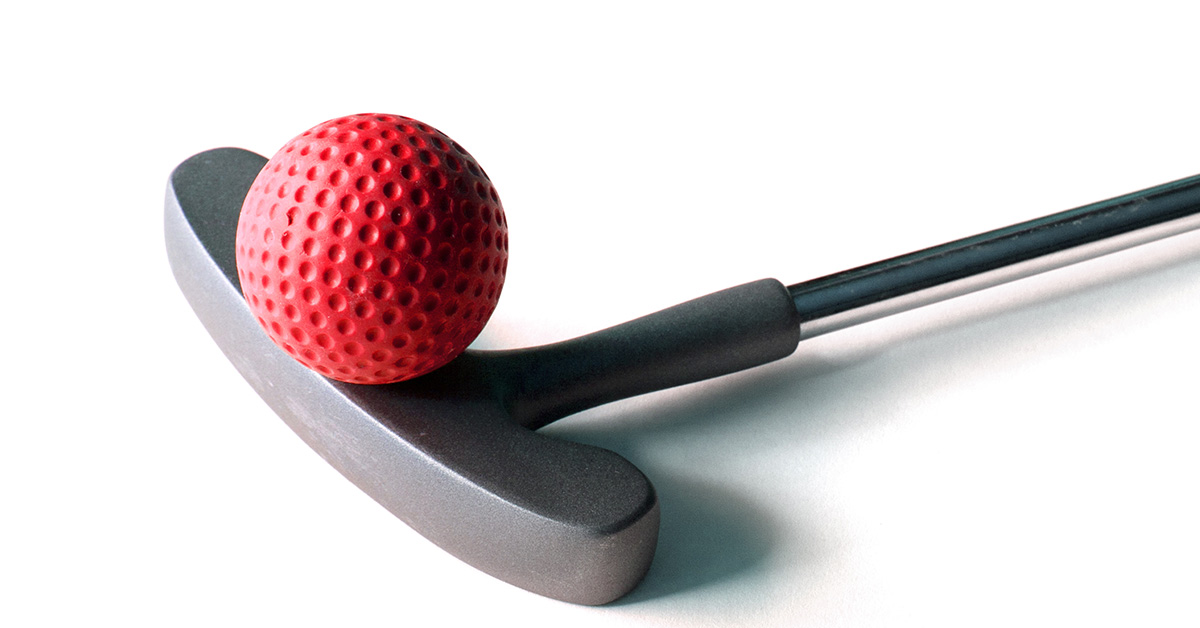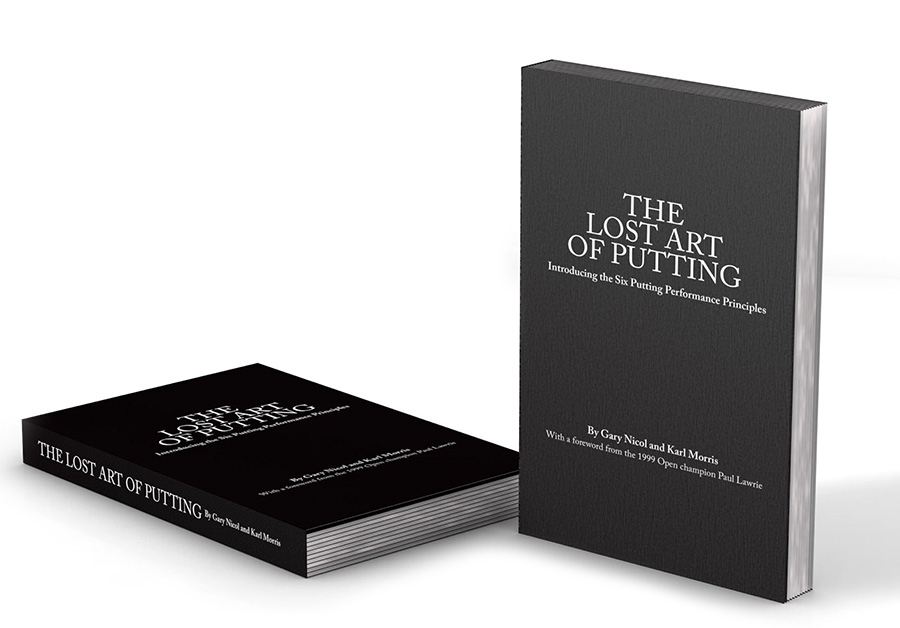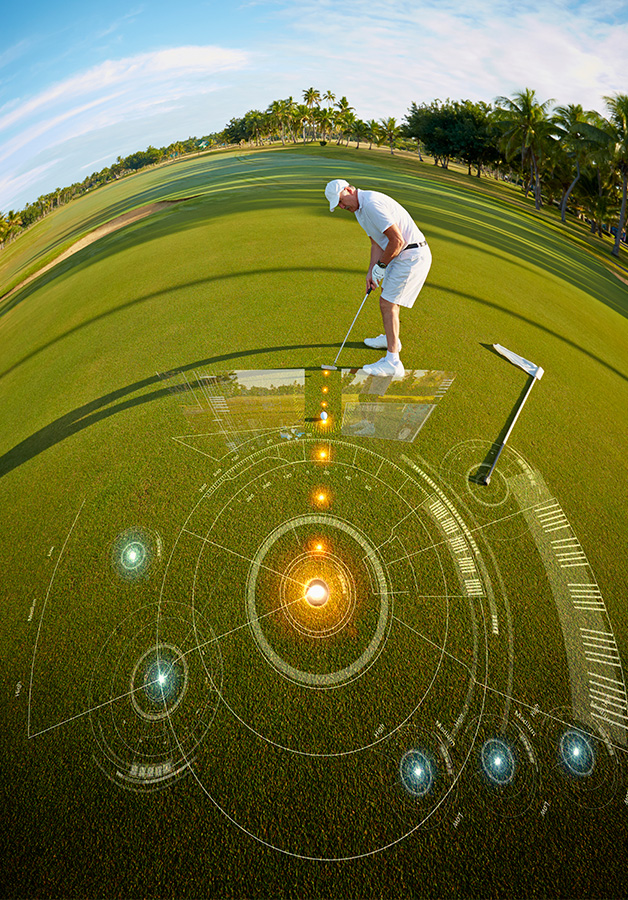Does the stroke create the putt or does the putt create the stroke?
Where people really get putting wrong inspired Scottish-born coach Gary Nicol to write a book detailing the six putting performance principles.
Could The Lost Art of Putting change your game?
 If only I could hole more putts, I would enjoy my golf so much more!”
If only I could hole more putts, I would enjoy my golf so much more!”
This is something we hear on a daily basis from our students, regardless of how often they play or the level they play at. This sentiment rings true from weekend golfers to tour pros.
Not once have we heard of anyone who feels they hole more than their fair share of putts. We all want to hole more putts.
That said, what action do you take in order to improve your performance on the greens? You might grab your putter and three balls and head to the putting green to work on your stroke. You hole a few and miss a few. You change your grip to left-hand-low then hole a few and miss a few. No real improvement there.
This time round you focus on your start line. Same old story, you hole a few and miss a few. That didn’t work so you get out your putting mirror and other training aids. Guess what? You hole a few, miss a few, get bored and frustrated then head home having made no progress whatsoever.
Must play better. Must putt better. Must buy a new putter in order to putt better.
We often talk to our students about forming a relationship with their putter and embarking on a journey of discovery with it.
Statistics will tell you that you will use your putter more than any other club in your bag, so it makes perfect sense to take some time selecting the best tool for the task at hand, namely holing putts.
We have all been in the pro shop and found ourselves magnetically drawn to the putter rack in search of “The One” that will finally put an end to our putting woes. We pick one up, make a few practice strokes and think to ourselves, That feels great, as we imagine holing putts from all over the place to win the monthly medal or the Open Championship, before heading to the counter to pay for it.
However, do you really take time to think of this latest acquisition as a precision-engineered tool designed to do a specific job, or do you buy one because you played with Dave last week and he holed putts from everywhere with his?
While a new putter might help you in your quest to hole more putts, shoot lower scores and have more fun on the golf course, regardless of how much you spend on it, it will not come with a user’s manual.
 A “Hole” New Theory
A “Hole” New Theory
This is one of the main things that inspired us to write The Lost Art Of Putting. Yes, modern putters are better designed and built than they ever have been but they won’t hole putts on their own. That part is down to you. Whether you go for a mallet or a blade, face-balanced or toe hang is entirely down to personal choice.
If you are going to invest in a new putter, we strongly recommend you go through a custom-fit process before you part with your hard-earned cash. Find a pro or club fitter you can trust to help you get the right one for you. Preferably someone who has a TrackMan and knows how to use the Performance Putting software. TrackMan for putting? Yes, TrackMan for putting. We all know how good it is for providing accurate club and ball data on full shots. We want to know what the club and ball are doing on any given shot don’t we? So why wouldn’t we want to know what the putter and the ball are doing when we hit a putt? After all, we need to know how the putter is going to influence the ball if we want to become a better putter.
Can you imagine going for a custom-fit session for a new driver and looking at club data only? Of course not, that would be ridiculous! So why would you not want to know what the ball is doing in a putter fitting?
Without knowing what the ball is doing, you might as well wear a blindfold. The reality is that we need to pay more attention to what the ball is doing.
“What does the ball need to do to go in the hole?” is a question we ask our students and readers of The Lost Art Of Putting. It may sound like a pretty simple question but there are numerous reasons for asking it. First and foremost, questions focus your attention and this particular question focuses your attention on the ball, which is sadly largely neglected.
The vast majority of coaching and teaching focuses your attention on what you need to do and what the putter needs to do in order to “make a good stroke”. That school of thought would suggest that the stroke creates the putt. We beg to differ.
 What Really Matters
What Really Matters
Our belief and that of hundreds of golfers we have worked with and thousands who have read the book, is that the putt creates the stroke. The task creates the technique. Ultimately what really matters is what the ball does. We have all seen enough “individual” and “idiosyncratic” styles to know there is more than one way to get the job done.
For the ball to go in the hole, it needs to have a relationship with momentum and gravity. Too little or too much of the former means the latter will have never have a chance to take effect. In order to hole more putts, pay less attention to what you and your putter need to do and focus your attention on what the ball needs to do.
Before you hit any and every putt from now on, ask yourself the following questions:
- A) Is it possible you could hole this putt? Yes, it’s always possible.
- B) What does the ball need to do to go in the hole? It needs to travel on the right line at the appropriate pace. Pace determines the line, so make sure you pay attention to pace. Pace gives you options on line.
C) What does a really good putt look like? It looks like it drops in the hole at the right pace on the right line. We create what we see, so make sure you have a crystal-clear image of that ball dropping into the hole.
Whatever putter you go for, make sure it helps you hit the ball on the right line at the appropriate pace. After all is said and done, the golf course demands that you create good putts not “technically perfect” putting strokes, whatever they look like! Form a relationship with your putter and together you can embark on an exciting journey.
Ask if your new putter comes with a user’s manual. If it doesn’t, which it won’t, you can buy a copy of The Lost Art Of Putting in Kindle format on amazon.com.au or in hardback by visiting thelostartofgolf.com .
*Gary Nicol co-authors the best-selling golf book The Lost Art Of Putting with Karl Morris




